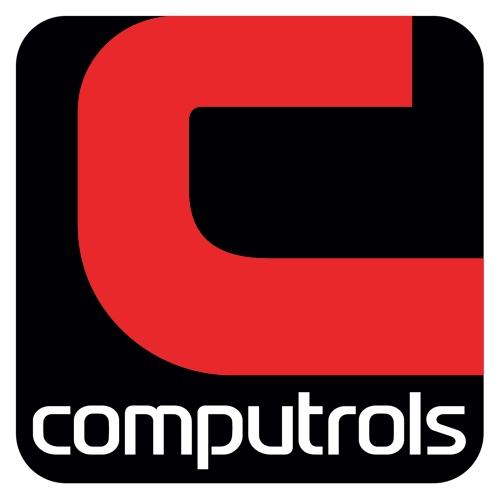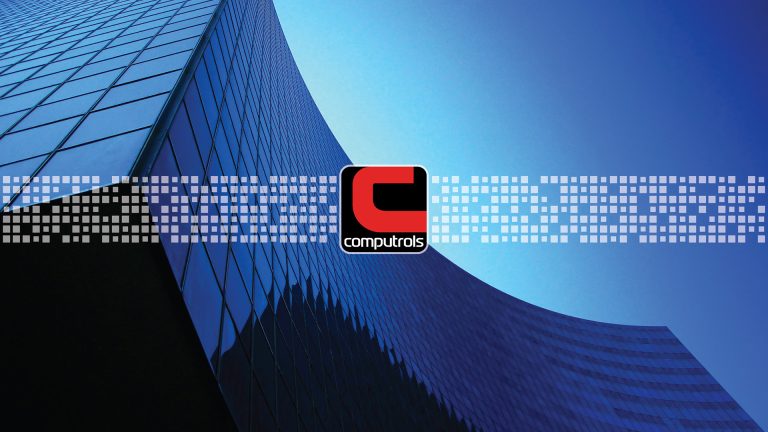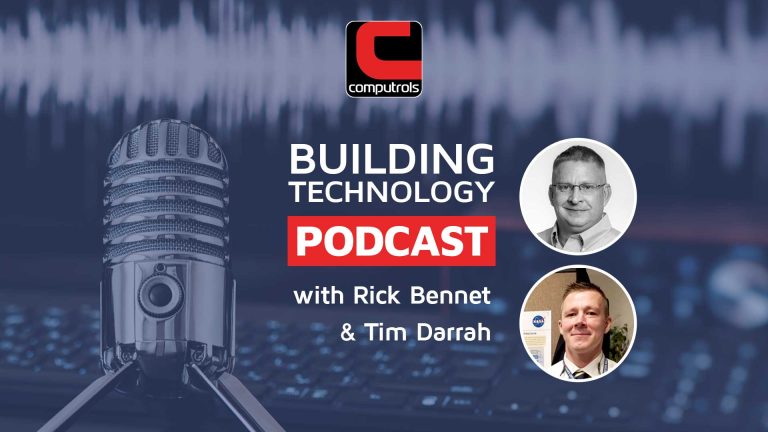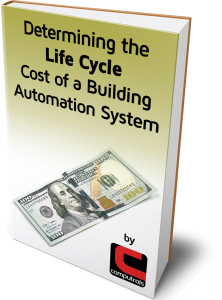The Energy Cost Index (ECI) is the measurement of cost per square foot per year of conditioned space in a facility ($/ft²/year). The average ECI of electricity for an office building in the U.S. is about $1.73/ft²/yr according to the U.S. Energy Information Administration. What are you doing to reduce your ECI?
Energy conservation is in great part a behavioral modification. Although it can often shine a light on these kinds of opportunities, technology alone does not ensure a facility will be able to reduce its energy usage.
Making a significant impact on your building’s energy use and cost does not always require a big investment. We can start with the “low-hanging fruit” where the investment can be minimal. In other words, where the return-on-investment (ROI) would be close to immediate.
1. Appoint an “Energy Warden”
Energy cost reduction results from improvements in energy efficiency and changing patterns of energy use. We can start by encouraging a culture of energy-use consciousness within management and the engineering team members in an office building. A part of this can be appointing an “Energy Warden” in charge of looking out to see where energy efficiencies can be had and reporting these opportunities to management.
2. Fixing Air Leaks in Pneumatic Systems
Compressed air in a building is often mistakenly perceived as being low-cost when in fact, a single 1/8 inch air leak in a 50 psi line can cost hundreds of dollars per year. Fixing leaks can also cut the amount of pressure needed on the compressed system source. For every 2 PSI reduction, compressor energy consumption reduces by 1% according to the Association of Energy Engineers.
3. Optimal Start
Perhaps the best place to look for low investment, high yield energy savings is your building automation system (BAS). A prime example of this is “optimal start”. Optimal start is used to anticipate the heating or cooling needs of a space by starting equipment early enough to reach setpoint just at the beginning of scheduled occupancy. This process simply allows your HVAC equipment to stay off until the very last moment.

To accomplish this, your BAS takes into account a reference indoor temperature and, since office buildings are considered to be thermally “light”, the outside air temperature. Thermally light means the building is easily influenced by outside conditions because of a lack of insulation. As a rule of thumb, it is recommended that there is no outside air intake during the optimal run time of an air handling unit (AHU). A floor or a building should only intake fresh outside air while it is considered to be within the hours of occupancy. Ensuring this is the case with your BAS can result in an immediate ROI.
4. The Affinity Laws

Turn off or slow down equipment wherever possible instead of having adjusting actuators or valves trying to achieve a similar result. While adjusting actuators and/or valves effectively reduce the air going into a space, the AHU (which is consuming the most significant amount of energy) for example will continue to run full throttle.
One strategy we recently implemented for a customer as part of a central plant upgrade was retrofitting centrifugal chill water (CHW) pumps with variable frequency drives (VFD) for the basement chillers. We are now able to control the system CHW differential pressure (DP) sensor (located on the top floor of the building) by slowing down (modulating) the plant CHW pumps within the operating flow range of the chillers. This was previously accomplished by only modulating the CHW bypass valve. Opening up the CHW bypass valve is used as a last resort on low load conditions and only after the CHW pumps are at their lowest possible limit allowed by the chillers.
In this previous example the “Affinity Law” that would apply for the centrifugal pump as a very powerful conservation measure can be calculated as:
%NEW= [%OLD X (GPMNEW / GPMOLD)^3]
%NEW= [100% X (1600/2000)^3]
%NEW = 51%
And 100% – 51% = 49%
In other words, if we slow down the GPM flow from 2000 GPM to 1600 GPM, the flow difference would be 400 GPM (about 20% decrease in flow), however, the power consumption would be reduced from a 100% to a 51% of total HP. This would generate a decrease of almost 50% in power use of the pump!
Older chillers are generally more efficient while running fully loaded where new chillers are relatively more efficient when they run on lower loads. One scheme to consider would be to run two efficient chillers on partial load rather than one fully loaded, considering the total energy use of the system as a whole.
5. Cooling Tower Control Based on Approach
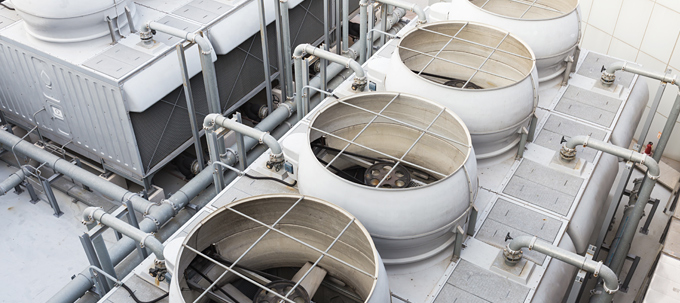
On the flip side of a chiller (and in a previous article on the Computrols website), we must make sure that our BAS controls do not let the condenser water setpoint get below wet-bulb temperature. Doing this will avoid energy waste. The setpoint, in fact, must be an approach offset (typically 6 to 11 degrees) above the wet-bulb temperature or the condenser water return minus the cooling tower efficiency range temperature, whichever is the highest of the two and not lower than the temperature allowed by the operating chiller(s).
Cooling towers operate on the principle of evaporative cooling. This method takes the energy from the condenser water, being stored as heat, and uses it to force the water to change state from liquid to gas. Having expended its excess energy to initiate the evaporation, the now cooler water returns to the chiller to begin the process all over again. Ideally, the lowest temperature we could cool the water down to would be equal to the wet-bulb temperature. However, in the real world we must use an approach offset to keep our goal above the actual conditions, or else we will never reach the setpoint. This is caused by the inherent inefficiencies of mechanical equipment, meaning that no machine is 100% efficient. The issue is compounded by the requirement of preventive maintenance to avoid additional decreases inefficiency, such as scale build-up on the tower that would reduce heat transfer, loss of airflow across the heat exchange surfaces, or improper water flow. If we set our setpoint equal to the wet bulb temperature then we would waste energy trying to meet an unattainable goal, thus establishing the need for an offset.
Verifying your current BAS controls and making sure that this is in place at your facility can yield as another example of an energy-savings measure.
Get Started!
Now that you know where to start, get started! With HVAC accounting for a large percentage of the average facility’s energy consumption, this is a perfect place to kickoff your energy efficiency initiatives.
